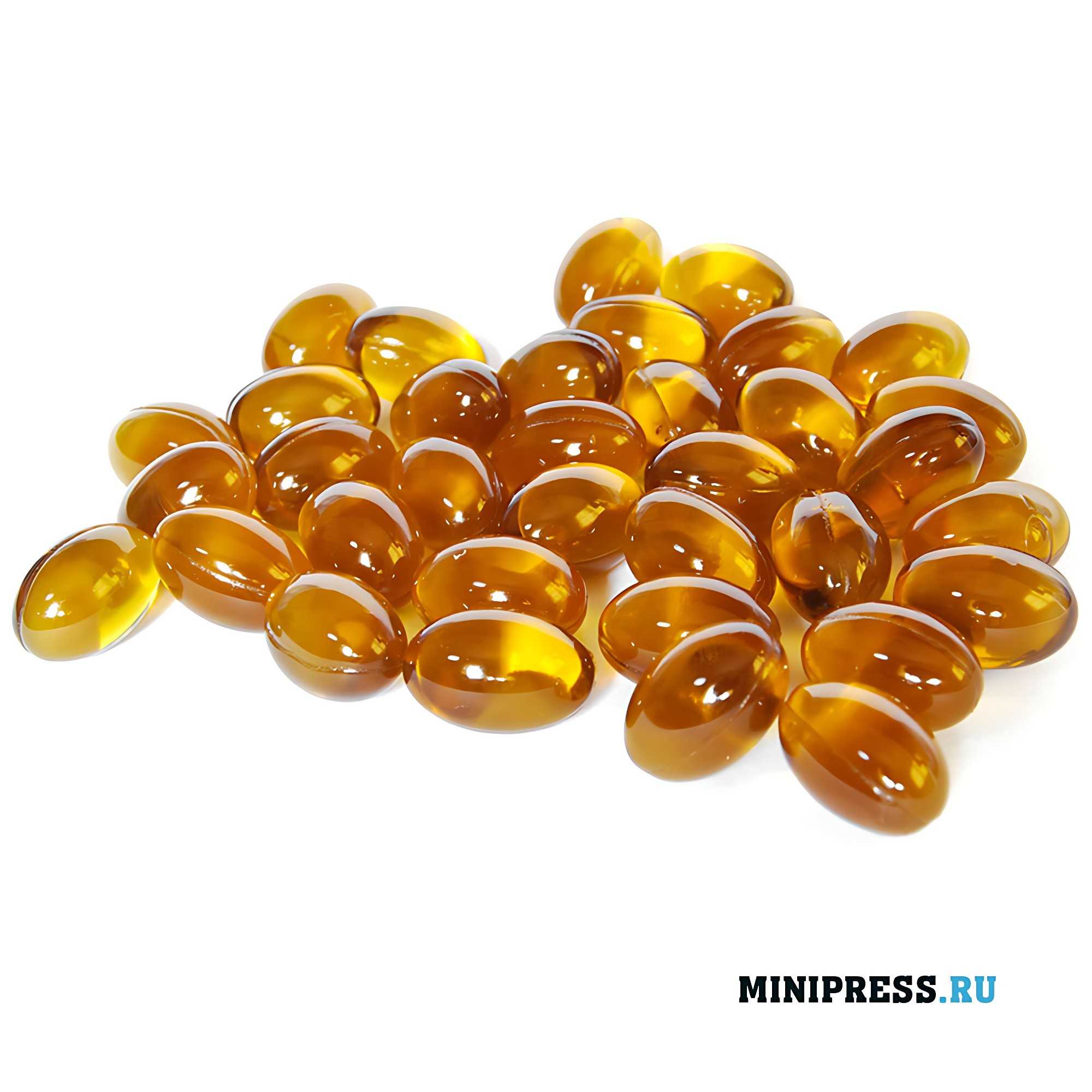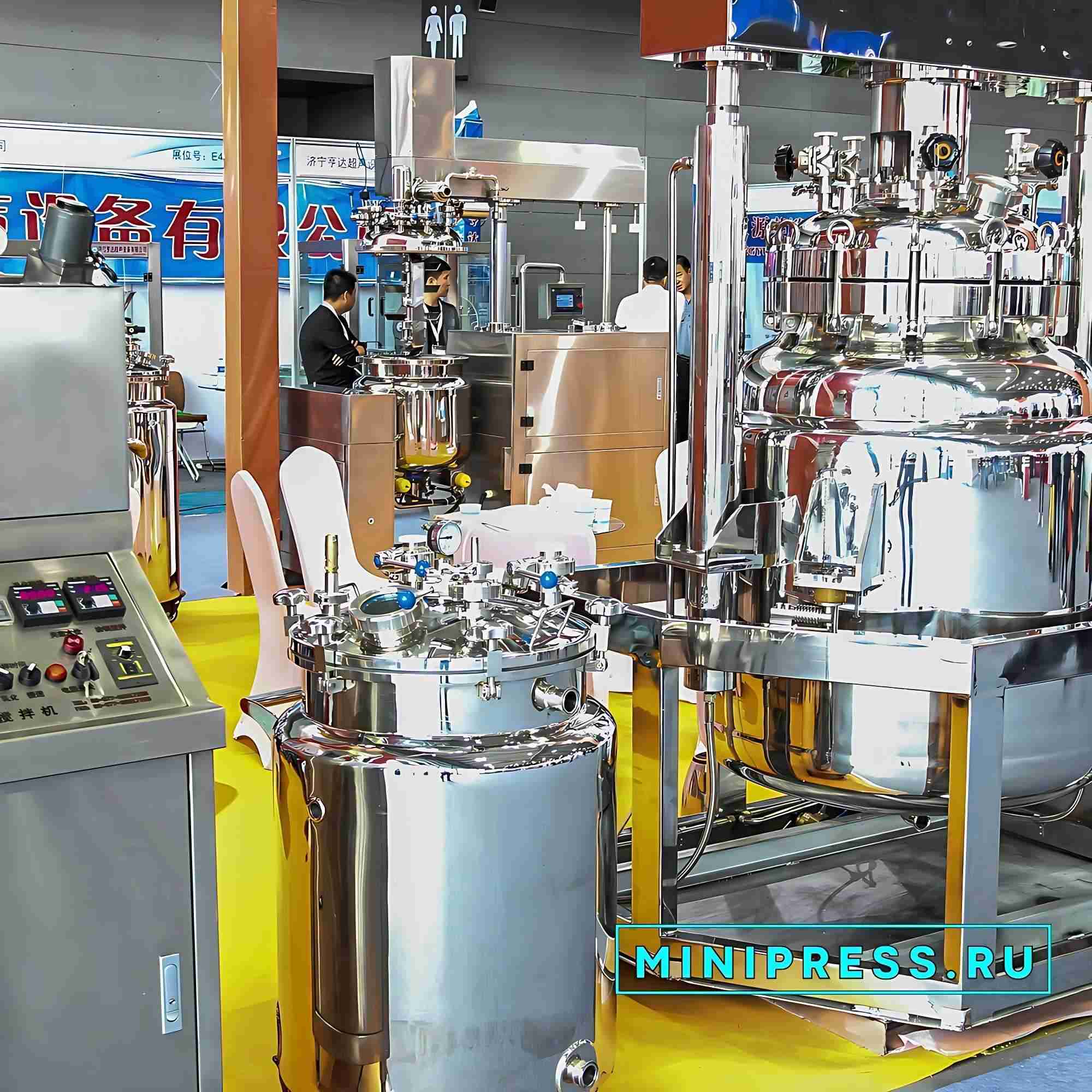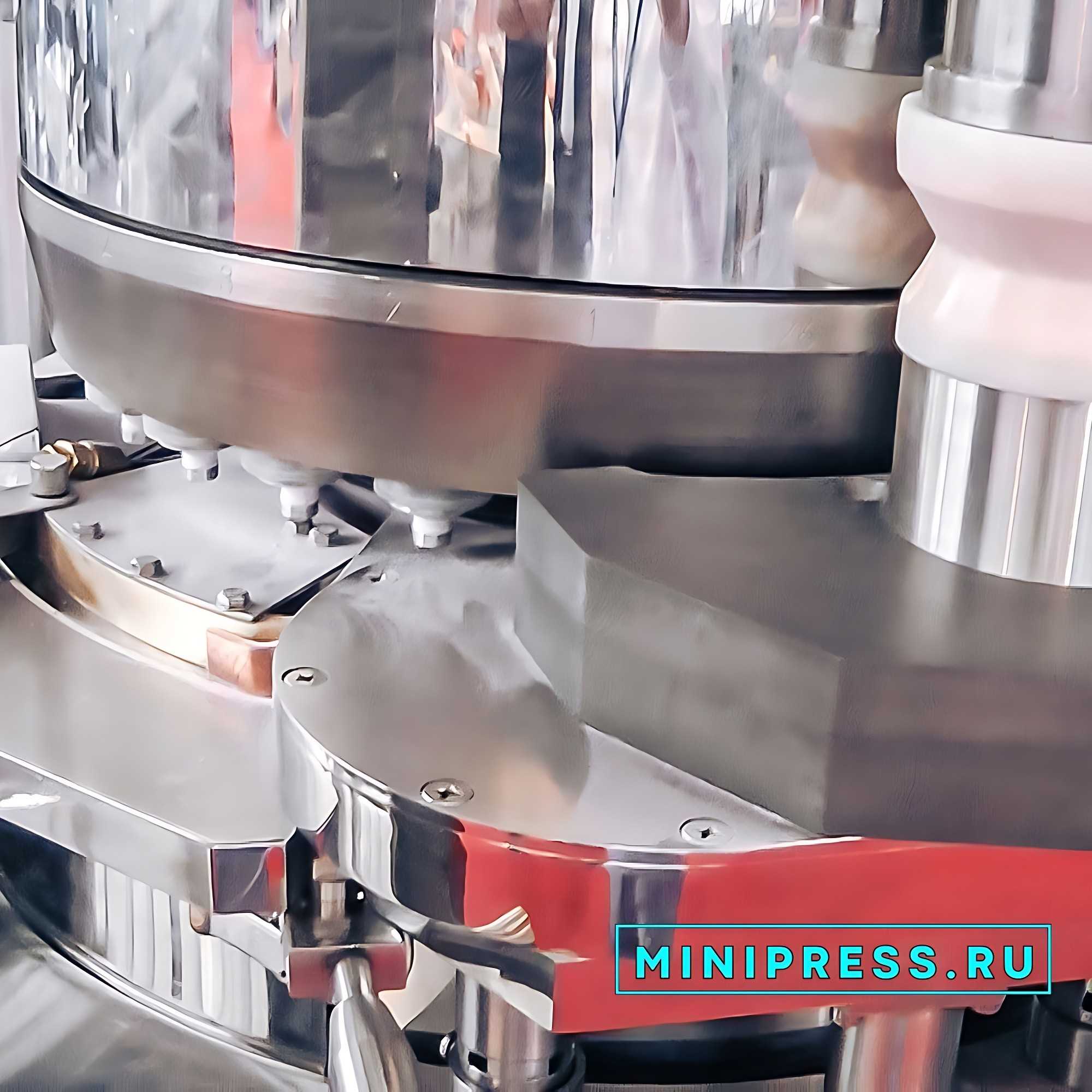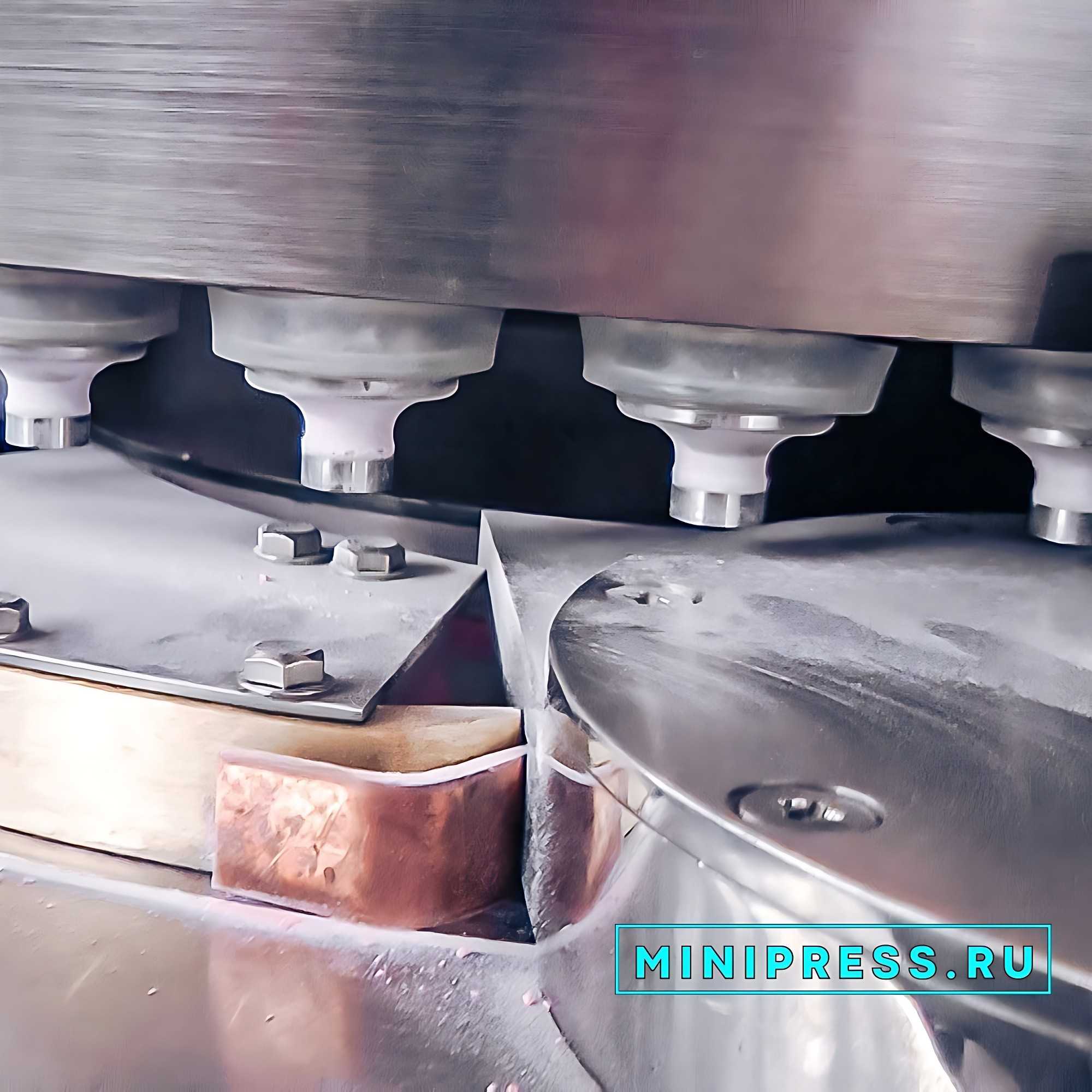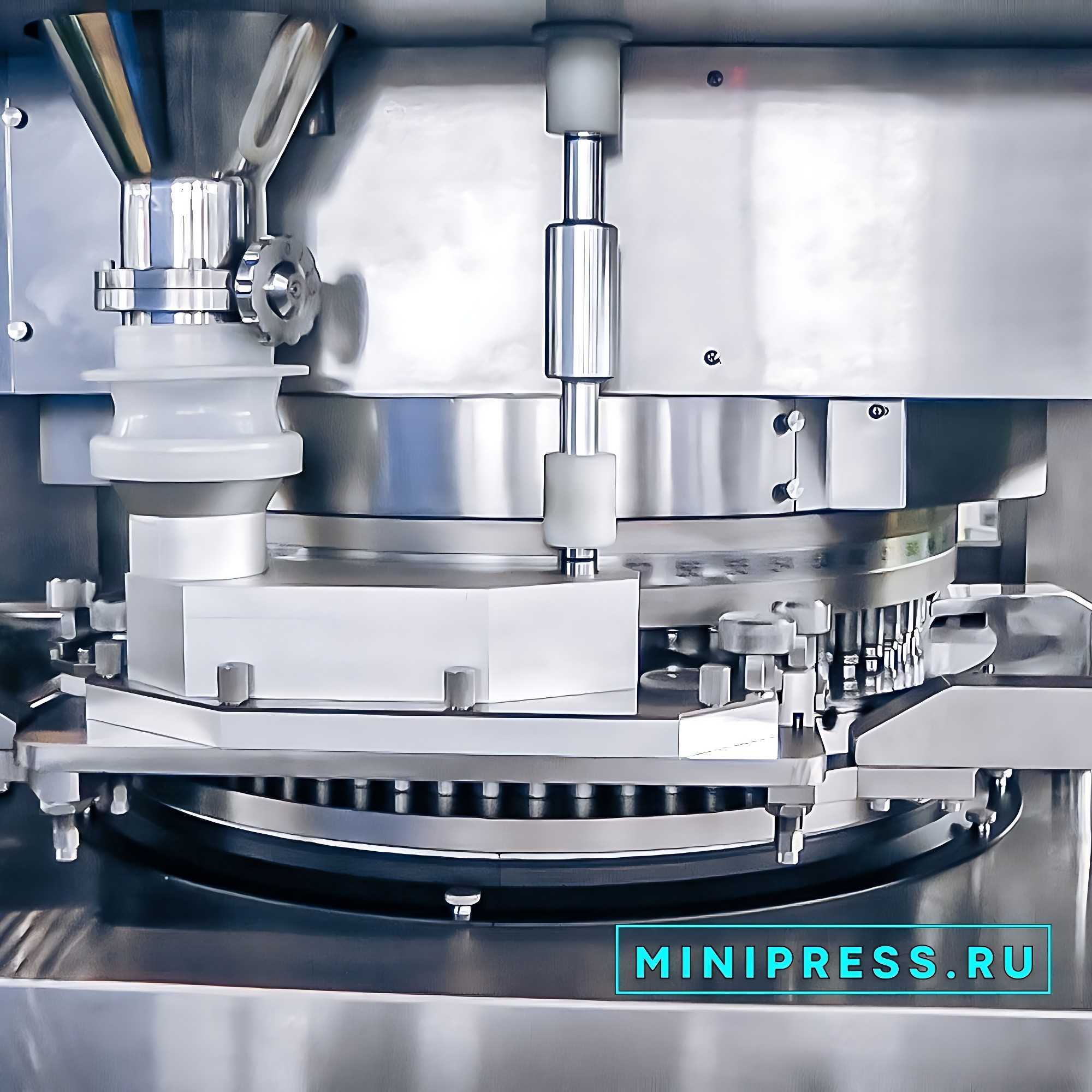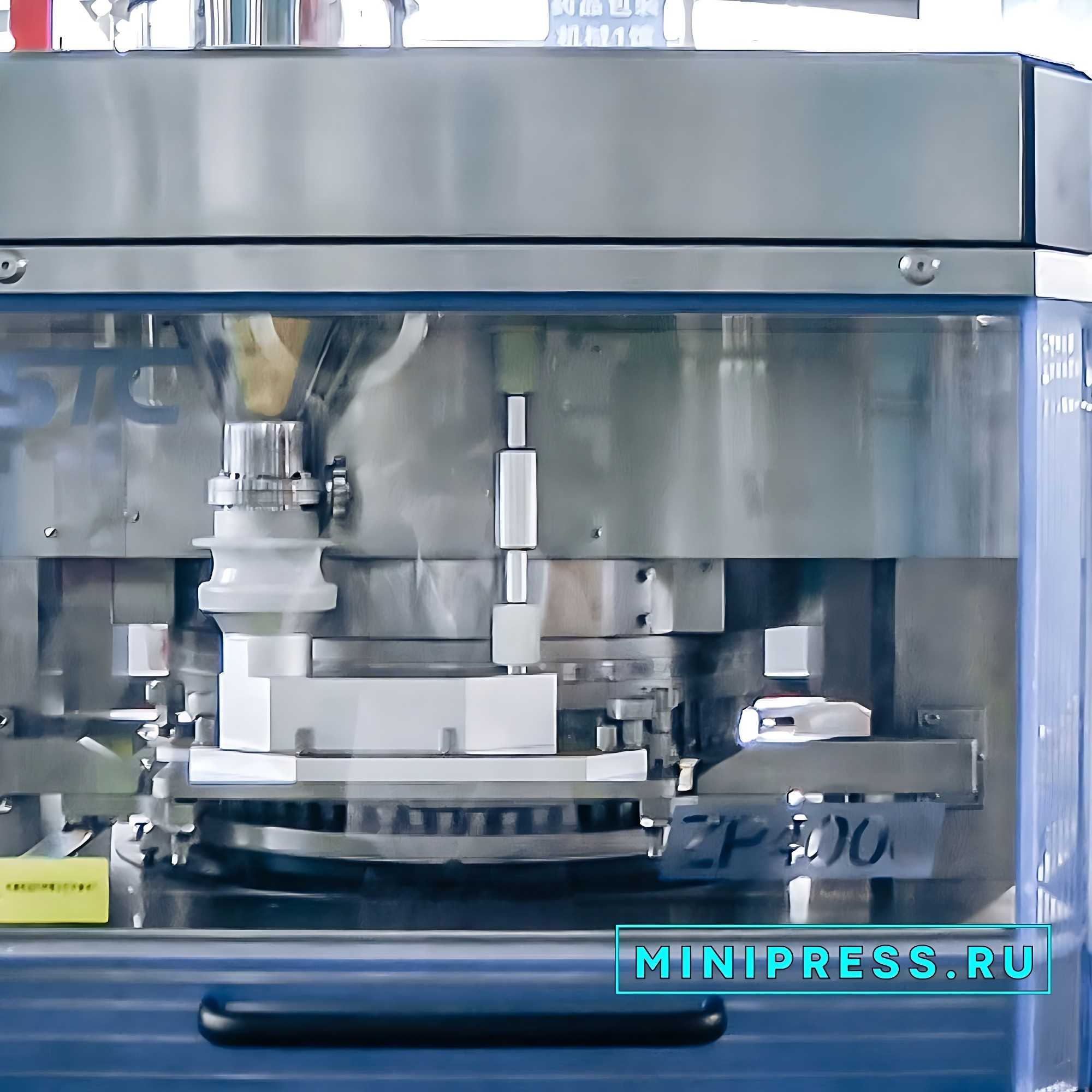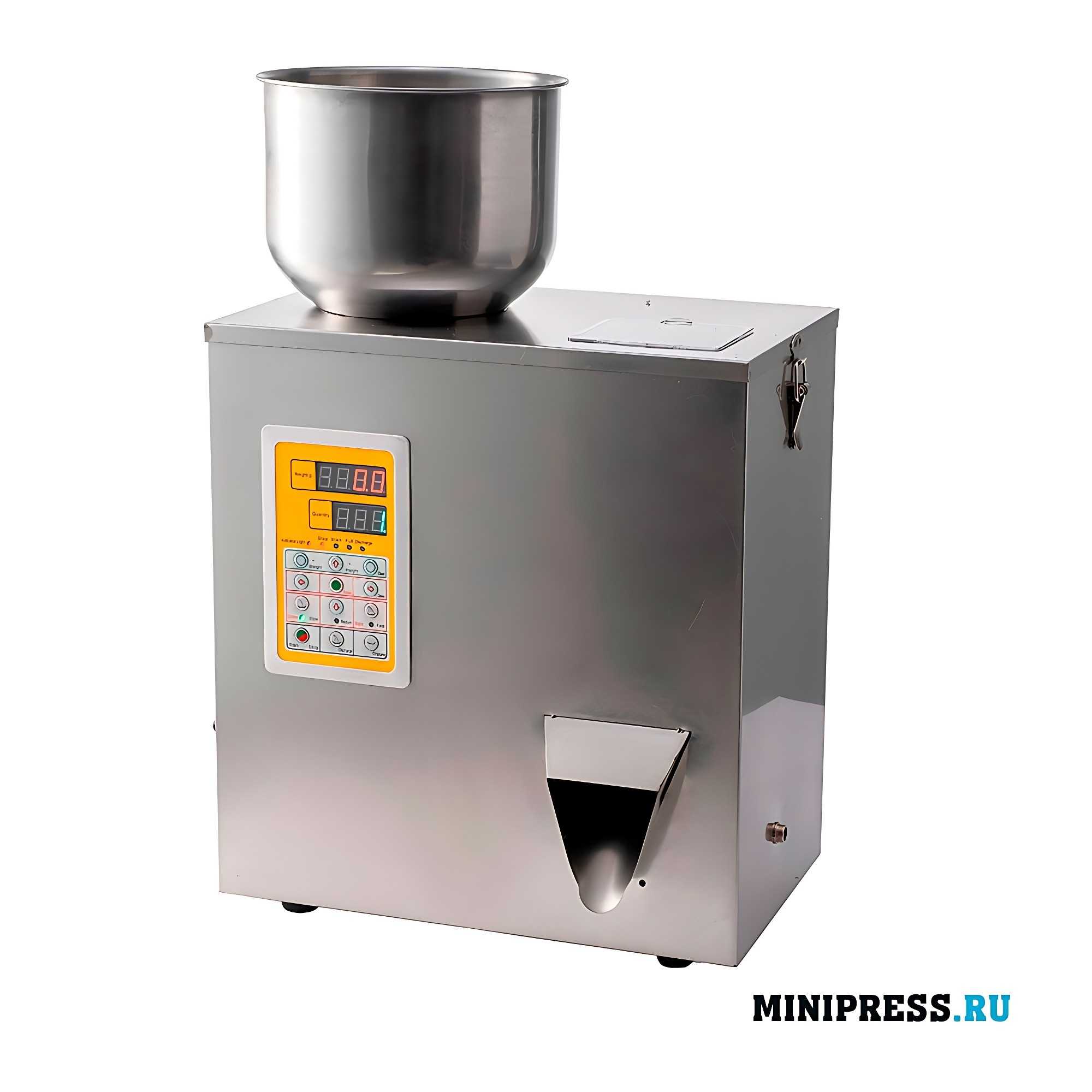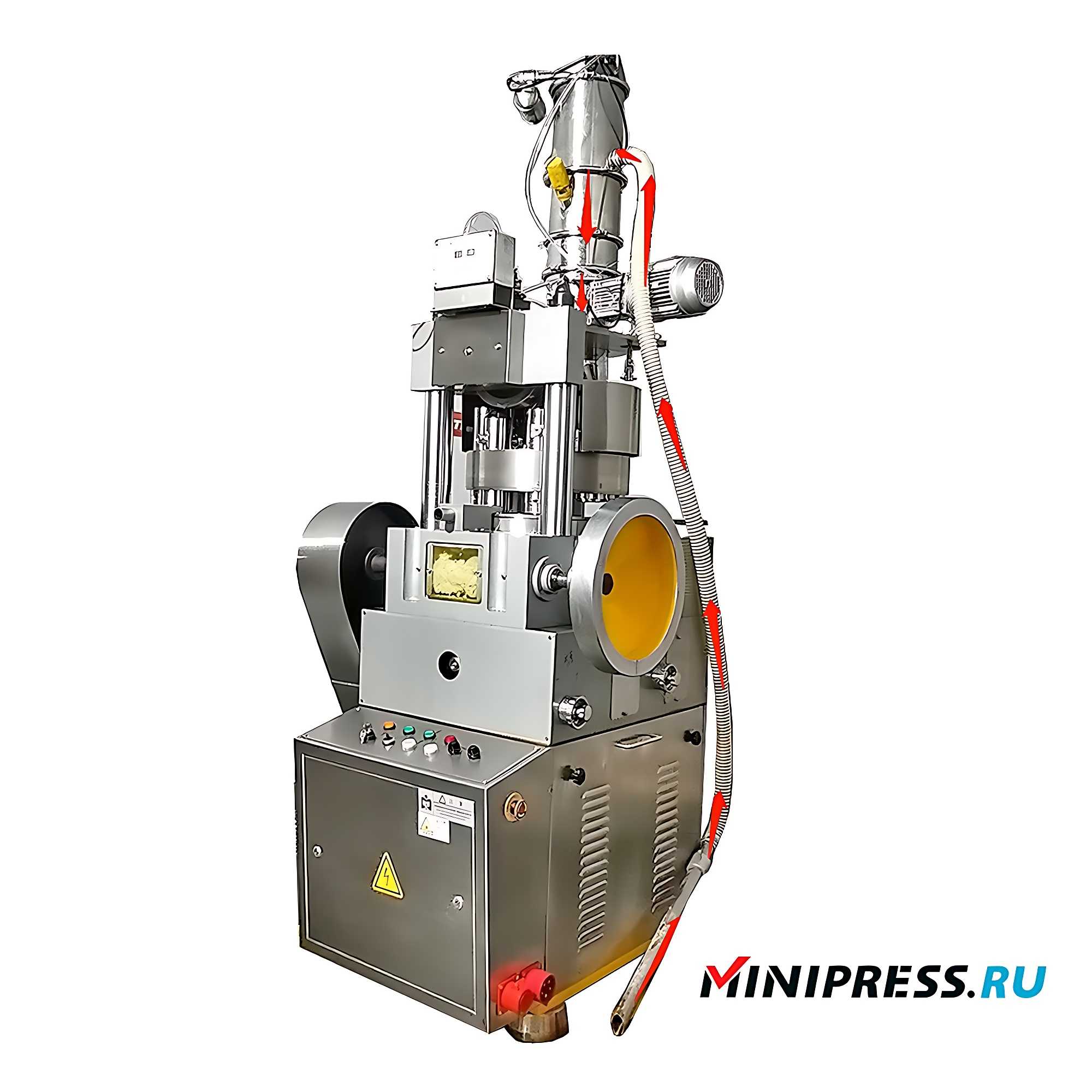 Video review of the model
Video review of the model
 Our service and customer service
Our service and customer service
Fewer excipients in the manufacture of capsules than, for example, in the manufacture of tablets. In addition, capsules require less machinery due to fewer production steps, fewer analytical techniques to be used in the required analyses, and fewer authorization procedures and documents than tablet production. In soft and hard capsules, drugs can be encapsulated in unaltered form without wet granulation, heat, and pressure as in tablet manufacturing. In addition, the number of factors affecting the processes of release and absorption of drugs from capsules is much smaller than for other dosage forms. A disadvantage of gelatin capsules is their high sensitivity to moisture, which requires compliance with certain conditions for their storage. Another disadvantage is the fact that gelatin is an excellent breeding ground for microorganisms. This disadvantage is prevented by adding preservatives to the mass: nipagin (0.4%), nipazole (0.4%), sorbic acid (0.1-0.2%) and others. Gelatin capsules may differ in capacity. At the same time hard capsules are produced worldwide in 8 standard sizes (Standart): from No. 5 (the smallest) to No. 000 (the largest). Some companies have mastered the production of an additional ninth size No. 0e1 (0 elongated, i.e. size 0 for elongated capsules). In addition to these, Supro capsules of five standard sizes from A to E have recently become widespread abroad.
 Pharmaceutical Glossary
Pharmaceutical Glossary
 Technical specifications
Technical specifications
Solid capsules are intended for dispensing loose powdery or granular substances. They have the shape of a cylinder with hemispherical ends and consist of two parts: a body and a cap; both parts must fit freely into each other without forming gaps. Hard capsules are filled after the molding process has been fully completed and they have acquired the appropriate elasticity and rigidity. Hard capsules have a two-part structure and can be manufactured in advance and filled with drug substances as needed. Soft capsules are designed for liquid or paste-like drug substances. Capsules have different shapes: spherical, ovoid, oblong or cylindrical with hemispherical ends. Soft capsules got their name due to the fact that in the process of their manufacture, the filler is placed in a still soft elastic shell. The capsules are then subjected to further manufacturing processes that may result in the original elasticity of the shell being partially or completely lost. Such capsules have a one-piece shell, which may be elastic or rigid. Sometimes the shell of soft capsules contains the active substance.Capsules are intended for oral, less often rectal, vaginal and other routes of administration. Depending on the localization of oral capsules are divided into sublingual, gastric-soluble and intestinal-soluble (resistant to the action of gastric juice, but easily destroyed in the environment of the small intestine). Modified-release capsules have special excipients in the contents or shell designed to change the rate or location of release of active ingredients. Intestinal soluble capsules are also classified as modified-release products, which must be stable in gastric juice and release the active ingredients in the intestine. They can be manufactured by coating hard or soft capsules with an acid-resistant shell or by filling capsules with granules or pellets coated with acid-resistant shells.
 Additional information
Additional information
Currently, the dosage form in the form of gelatin capsules has become very popular with pharmaceutical manufacturers, consumers and physicians due to a number of advantages and positive characteristics. These include, among others:
High dosing accuracy of the drug substances placed in them. Modern equipment ensures high accuracy of filling capsules with filler (with a tolerance not exceeding ±3%) and minimal losses. High bioavailability. Studies have shown that capsules often disintegrate faster in the human body than tablets or dragees, and their liquid or unabsorbed solid contents are more quickly and easily absorbed. The pharmacological action of the drug substance is manifested in 4-5 min. High stability. Drug substances in capsules are protected from various unfavorable environmental factors – the effects of light, air, moisture, mechanical influences – due to the shell, which provides a sufficiently high tightness and isolation of components. Therefore, in the manufacture of capsules it is possible to avoid the need to use antioxidants or stabilizers or reduce their amount.
Corrective ability – unpleasant taste and odor of medicinal substances is eliminated, which is especially important in pediatrics. High aesthetics – achieved through the use of various dyes in obtaining capsule shells. Today, leading pharmaceutical companies use up to 1,000 different colors and shades for coloring capsule shells.
Possibility to set specific properties of drug substances – creation of intestine-soluble capsules, as well as urethard capsules (with prolonged drug release), which can be achieved by various technological methods.
Order status tracking
Good afternoon, I am hoping in the morning to get the UNIC 600A Tablet Press in Leicester ! Please comment. 01/01/2026 12:42
Good day, Ava! Our manager has communicated with the delivery service, the equipment will be delivered to Leicester at your address. Please let us know when you receive it. 01/01/2026 12:44
HX-6 Plastic Tube Filling and Sealing Machine in Berlin? Price delivery terms and conditions 01/01/2026 12:52
Sebastian, good afternoon, we have received your request by email. In 15 minutes we will send you our quotation for this model of equipment. 01/01/2026 12:53
LW-35 automatic PVC+cardboard blister packaging machine has been on the road for 30 days. What news ? 01/01/2026 13:02
Hello Natalie, We are on time, tomorrow until 15:30 a driver will contact you about unloading. 01/01/2026 13:04
PU-250 flow-pack packaging machine, please advise delivery status. 01/01/2026 13:12
Hello Emma, your equipment is undergoing customs clearance. Your manager Natalia will contact you tomorrow until 15:30 01/01/2026 13:14
Hello, is it possible to buy your blistering machine for tablets and capsules MN-80 1 piece with delivery to Washington ( Europe) ? How much time for delivery ? 01/01/2026 13:22
Isabella, hello! We have many customers from your city. Delivery to this region is made by EMC. 01/01/2026 13:25
I'm waiting to get my XL-12 plastic bottle filling and capping machine to Frankfurt, then I want to buy an automatic capsule machine model GN-28 01/01/2026 13:32
Good afternoon, James! On the first question - the shipment will arrive in Frankfurt as agreed. On the second question - the model GN-28 will be processed under a new contract ? Contact the office. 01/01/2026 13:34
LB-205 horizontal automatic wet alcohol wipes packaging machine delivery status ...thank you 01/01/2026 13:42
Hello Layla, it is too early to check the status of your order. In 30 days only the epat of production will be completed. 01/01/2026 13:43
The BB-152 liquid filling machine arrived from you today, remember us ? Where's the paperwork? 01/01/2026 13:52
{The original shipping documents will be delivered to Granada as stipulated in the contract. Please send the signed copies to us. 01/01/2026 13:55
The BB-152 liquid filling machine arrived from you today, remember us ? Where's the paperwork? 01/01/2026 14:02
{The original shipping documents will be delivered to Venice In the afternoon. Please send the signed copies to us. 01/01/2026 14:04
Good afternoon, we have contracted you to deliver a GK-40 dry powder granulator to Ljubljana, do you deliver to the terminal or to the actual address? 01/01/2026 14:12
Hello Aiden, we ship all over Europe and the US including to Ljubljana . The price in the catalog includes any delivery our customer asks for. 01/01/2026 14:13
- EQUIPMENT FOR FILLING CREAMS AND SEALING PLASTIC TUBES
- EQUIPMENT FOR THE PRODUCTION OF TABLETS
- AUTOMATIC EQUIPMENT FOR REMOVING TABLETS AND CAPSULES FROM BLISTERS
- EQUIPMENT FOR FILLING HARD GELATIN CAPSULES WITH POWDER
- EQUIPMENT FOR FILLING AND SEALING GLASS AMPOULES
- SPRAY DRYING EQUIPMENT FOR SUSPENSIONS
- MACHINES FOR THE PRODUCTION OF SUPPOSITORIES
- BOTTLE FILLING AND CAPPING EQUIPMENT
- EQUIPMENT FOR COUNTING AND PACKAGING TABLETS AND CAPSULES IN BOTTLES
- EQUIPMENT FOR PACKING POWDERS INTO VIALS
- EQUIPMENT FOR PRINTING LOGO ON TABLETS AND CAPSULES
- EQUIPMENT FOR POLISHING AND DEDUSTING TABLETS AND CAPSULES
- HIGH-PRECISION DOSING MACHINES POWDER FILLING MACHINES
- MACHINES FOR FORMING AND FILLING PLASTIC AMPOULES
- EQUIPMENT FOR COATING TABLETS
- EQUIPMENT FOR WASHING AND STERILIZING BOTTLES
- EQUIPMENT FOR PACKAGING TABLETS AND CAPSULES IN PLASTIC BOTTLES
- AUTOMATIC PHARMACEUTICAL CENTRIFUGES
- POWDER GRANULATION EQUIPMENT
- EQUIPMENT FOR VACUUM TRANSPORTATION OF POWDERS
- EQUIPMENT FOR SCREW FEEDING OF POWDERS
- EQUIPMENT FOR HOMOGENIZING CREAMS AND OINTMENTS
- EQUIPMENT FOR EFFICIENT MIXING OF POWDERS
- EQUIPMENT FOR AUTOMATIC BOTTLE FEEDING FOR FILLING LINES
- EQUIPMENT FOR PACKAGING FOOD PRODUCTS IN DOY-PACK PACKAGES
- EQUIPMENT FOR PACKAGING PRODUCTS IN A FLOW PACK
- FLOW-PACK PACKAGING MACHINES
- AUTOMATIC EQUIPMENT FOR BLISTER PACKAGING
- EQUIPMENT FOR PACKAGING TABLETS IN STRIPS AND TUBES
- EQUIPMENT FOR METAL DETECTOR IN GELATIN CAPSULES AND TABLETS
- EQUIPMENT FOR FILLING AND PACKAGING HERBAL TINCTURES
- EQUIPMENT FOR FILLING LIQUIDS IN PLASTIC AND METAL BARRELS
- EQUIPMENT FOR INDUCTION SEALING OF ALU FOIL BOTTLES
- AUTOMATIC EQUIPMENT FOR SELF-ADHESIVE LABELS ON PACKAGING
- EQUIPMENT FOR WRAPPING CARDBOARD BOXES WITH CELLOPHANE
- EQUIPMENT FOR PACKING TEA INTO TEA BAGS WITH THREAD AND LABEL
- EQUIPMENT FOR THE MANUFACTURE AND PACKAGING OF WET ALCOHOL WIPES
- EQUIPMENT FOR WEIGHT CONTROL AND SORTING OF CARDBOARD BOXES WITH MEDICINE
- EQUIPMENT FOR APPLYING THE EXPIRATION DATE AND BATCH NUMBER TO PRODUCTS
- EQUIPMENT FOR PACKAGING BULK MATERIALS IN PLASTIC BAGS
- EQUIPMENT FOR VACUUM PACKAGING IN PLASTIC BAGS
- SEMI-AUTOMATIC EQUIPMENT FOR BLISTER PACKAGING
- DESKTOP EQUIPMENT FOR LIQUID DOSING
- EQUIPMENT FOR THE PRODUCTION OF FISHING BOILIES
- EQUIPMENT FOR AUTOMATIC DOSING OF CREAMS AND OINTMENTS
- EQUIPMENT FOR POWDERING PHARMA RAW MATERIALS
- EQUIPMENT FOR LABORATORY TESTING OF MEDICINES
- DESKTOP EQUIPMENT FOR HIGH-SPEED EMULSION PRODUCTION
- EQUIPMENT FOR MIXING LIQUIDS WITH MICROWAVE HEATING
- EQUIPMENT FOR VIBRATING SIEVING OF POWDERS
- DESKTOP EQUIPMENT FOR MIXING POWDERS
- MANUAL EQUIPMENT FOR FILLING GELATIN CAPSULES WITH POWDER
- SEMI-AUTOMATIC EQUIPMENT FOR FILLING GELATIN CAPSULES
- MACHINES PRINTING EXPIRATION DATE AND LOT NUMBER
- PERISTALTIC PUMPS DISPENSERS
- EQUIPMENT FOR THE PRODUCTION OF TABLETS
- HIGH-PRECISION DOSING MACHINES POWDER FILLING MACHINES
- EQUIPMENT FOR WASHING AND STERILIZING BOTTLES
- EQUIPMENT FOR FILLING CREAMS AND SEALING PLASTIC TUBES
- EQUIPMENT FOR COUNTING AND PACKAGING TABLETS AND CAPSULES IN BOTTLES
- EQUIPMENT FOR COATING TABLETS
- SPRAY DRYING EQUIPMENT FOR SUSPENSIONS
- EQUIPMENT FOR PRINTING LOGO ON TABLETS AND CAPSULES
- EQUIPMENT FOR PACKAGING TABLETS AND CAPSULES IN PLASTIC BOTTLES
- EQUIPMENT FOR FILLING AND SEALING GLASS AMPOULES
- MACHINES FOR FORMING AND FILLING PLASTIC AMPOULES
- EQUIPMENT FOR PACKING POWDERS INTO VIALS
- AUTOMATIC EQUIPMENT FOR REMOVING TABLETS AND CAPSULES FROM BLISTERS
- BOTTLE FILLING AND CAPPING EQUIPMENT
- EQUIPMENT FOR FILLING HARD GELATIN CAPSULES WITH POWDER
- MACHINES FOR THE PRODUCTION OF SUPPOSITORIES
- EQUIPMENT FOR POLISHING AND DEDUSTING TABLETS AND CAPSULES
- AUTOMATIC PHARMACEUTICAL CENTRIFUGES
- POWDER GRANULATION EQUIPMENT
- EQUIPMENT FOR AUTOMATIC BOTTLE FEEDING FOR FILLING LINES
- EQUIPMENT FOR VACUUM TRANSPORTATION OF POWDERS
- EQUIPMENT FOR HOMOGENIZING CREAMS AND OINTMENTS
- EQUIPMENT FOR SCREW FEEDING OF POWDERS
- EQUIPMENT FOR EFFICIENT MIXING OF POWDERS
- EQUIPMENT FOR FILLING AND PACKAGING HERBAL TINCTURES
- EQUIPMENT FOR PACKAGING TABLETS IN STRIPS AND TUBES
- AUTOMATIC EQUIPMENT FOR BLISTER PACKAGING
- EQUIPMENT FOR PACKAGING PRODUCTS IN A FLOW PACK
- EQUIPMENT FOR APPLYING THE EXPIRATION DATE AND BATCH NUMBER TO PRODUCTS
- EQUIPMENT FOR PACKAGING BULK MATERIALS IN PLASTIC BAGS
- EQUIPMENT FOR VACUUM PACKAGING IN PLASTIC BAGS
- EQUIPMENT FOR WEIGHT CONTROL AND SORTING OF CARDBOARD BOXES WITH MEDICINE
- EQUIPMENT FOR INDUCTION SEALING OF ALU FOIL BOTTLES
- EQUIPMENT FOR PACKING TEA INTO TEA BAGS WITH THREAD AND LABEL
- AUTOMATIC EQUIPMENT FOR SELF-ADHESIVE LABELS ON PACKAGING
- FLOW-PACK PACKAGING MACHINES
- EQUIPMENT FOR FILLING LIQUIDS IN PLASTIC AND METAL BARRELS
- EQUIPMENT FOR METAL DETECTOR IN GELATIN CAPSULES AND TABLETS
- EQUIPMENT FOR WRAPPING CARDBOARD BOXES WITH CELLOPHANE
- EQUIPMENT FOR THE MANUFACTURE AND PACKAGING OF WET ALCOHOL WIPES
- EQUIPMENT FOR PACKAGING FOOD PRODUCTS IN DOY-PACK PACKAGES
- MANUAL EQUIPMENT FOR FILLING GELATIN CAPSULES WITH POWDER
- EQUIPMENT FOR MIXING LIQUIDS WITH MICROWAVE HEATING
- EQUIPMENT FOR VIBRATING SIEVING OF POWDERS
- DESKTOP EQUIPMENT FOR LIQUID DOSING
- EQUIPMENT FOR POWDERING PHARMA RAW MATERIALS
- DESKTOP EQUIPMENT FOR HIGH-SPEED EMULSION PRODUCTION
- EQUIPMENT FOR LABORATORY TESTING OF MEDICINES
- SEMI-AUTOMATIC EQUIPMENT FOR BLISTER PACKAGING
- SEMI-AUTOMATIC EQUIPMENT FOR FILLING GELATIN CAPSULES
- EQUIPMENT FOR THE PRODUCTION OF FISHING BOILIES
- EQUIPMENT FOR AUTOMATIC DOSING OF CREAMS AND OINTMENTS
- PERISTALTIC PUMPS DISPENSERS
- MACHINES PRINTING EXPIRATION DATE AND LOT NUMBER
- DESKTOP EQUIPMENT FOR MIXING POWDERS








 8044
8044 7660300
7660300

